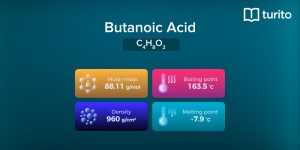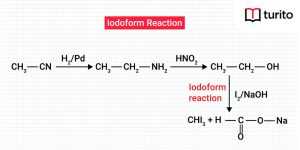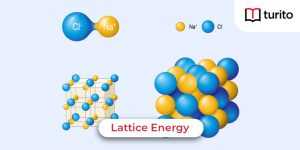Sodium Citrate is also Known as Trisodium Citrate. The sodium salts of citric acid are known as sodium citrates. There are three sodium salts of citric acid types: monosodium citrate, disodium citrate, and trisodium citrate. E number 331 (E331) refers to all three types of salts combined. It is a sodium salt of citrate obtained after the alkalizing activity, and its chemical formula is Na3C6H507. On the other hand, it refers to a third type: trisodium citrate.
It is a vital substance in the medicine and food industries. Here is an article that discusses its uses, definition, and frequently asked questions. It is a salt of citric acid, a natural organic acid found in citrus fruits, corn, and other foods. It is available in colorless crystals or white powder. This is typically sold as white, crystalline trisodium citrate dihydrate.
What is Sodium Citrate?
As a food additive, it is widely used as a flavoring agent and a preservative in the food industry. Flavoring agents like E331 are most commonly seen. It is the sodium salt of citrate and is the compound formed after alkalinizing activity. Citrate anions and sodium cations are formed upon absorption of sodium citrate.
Definition of Sodium Citrate
It is a sodium salt of citrate with alkalinizing properties. Trisodium citrate is another name for it. It can be used as a food preservative, an anticoagulant for stored blood, and an alkalizing agent for urine to eliminate kidney stones. The three types of sodium citrate are monosodium, disodium, and trisodium citrates.
Sodium Citrate Formula
Its constituents are sodium and citric acid. Its molecular formula is
C6H5Na3O7 or C6H5O7.3Na or Na3C6H5O7.

Trisodium citrate or Trisodium 2-hydroxypropane-1,2,3-tricarboxylate are the IUPAC names for sodium citrate. It is also known by other names, such as Natrocitral Citrosodine.
Formation of Sodium Citrate
When citric acid reacts with sodium bicarbonate in the presence of water in a bath bomb, this is formed.
C6H8O7 + 3NaHCO3 + H2O ⇢ Na3C6H5O7 + 3H2O + 3CO2
How Sodium Citrate is Produced Commercially?
It is typically produced by mixing a bit of sodium carbonate monohydrate with a hot aqueous five-citric acid solution. The resulting solution is evaporated until crystallization occurs. Another way to make it is to decompose calcium citrate with an alkali metal salt. The sodium salt of ten citric acids is known to exist in two forms: the so-called pentahydrate,15, and the di-hydrate CsH5O7Na3.2H2O
Properties of Sodium Citrate
| 1. | Molecular Formula and Weight | It has the molecular formula Na3C6H5O7 and a molar mass of 258.068 g/mol. |
| 2. | Physical Appearance | It is white and comes from crystalline powder or granular crystals. |
| 3. | Solubility | It is soluble in water and deliquescent when exposed to moist air. It is not soluble in alcohol. |
| 4. | pH | According to EU good improvement agents, the pH ranges from 7.5 to 9.0. |
| 5. | Density | It has a density of 1.7 g/cm3 |
| 6. | Chemical Structure | It contains seven hydrogen bond acceptors and one hydrogen bond donor. |
| 7. | Boiling point | When exposed to red heat, it decomposes. |
| 8. | Melting Point | It has a melting point greater than 3000 degrees Celsius, or 572 degrees Fahrenheit; 573 degrees Kelvin. |
| 9. | Natural Property | It has a sour taste similar to citric acid. |
| 10. | Texture | It does not have its structure, but it is essential in changing the forms of various elements, such as turning a cheese creamy. |
Is Sodium Citrate safe?It has been generally recognized as safe by the FDA. According to Whole Foods’ requirements for the quality of its cleaning and personal care products, the ingredient is approved. The chemical has also been approved for use in cosmetic goods by the Cosmetics Ingredient Review. Studies consistently demonstrate that the substance does not irritate or sensitize the skin. |
Health Hazards of Sodium Citrate
Citrosodine has been proven to be of common concern after numerous experiments. It is flammable. If you inhale Citrosodine, take a break and get some fresh air. If it comes into contact with your skin, wash it with soap and water. If it gets in your eyes, give them a good water rinse. If you consume this compound, thoroughly rinse your mouth.
Uses of Sodium Citrate (Na3C6H5O7 )
It has significant applications in food and beverage, healthcare, and other industries. Below you can read some of it usage:
1. Food and Beverage:
- It is used as an emulsifying salt in processed cheese products. The cheese may melt without getting greasy thanks to it.
- When combined with citric acid, it acts as a buffering agent, allowing for precise pH regulation in various foods and beverages.
- It prevents milk from curdling.
- It is employed in the emulsification of oils.
- Its primary purpose is to act as a food additive to enhance flavor or preserve food.
2. Healthcare:
- Sodium citrate is an effective blood anticoagulant. As a result, it is frequently used for blood collection and storage.
- It can help to alleviate the discomfort associated with urinary tract infections.
- It can also be used as a laxative to treat acidosis.
- It’s essential to the World Health Organization’s oral rehydration solution.
- It can also be used as an antacid, particularly before surgery.
- It is found in many pharmaceuticals, colors, cosmetics, and deodorants.
- This ingredient can be found in hair, oral, skin, and bathing products.
- To treat excess acid in the stomach, it acts as a buffer and a neutralizing agent.
- It is also used to treat metabolic acidosis, a type of renal problem that affects some people.
3. Industrial Applications:
- Citric acid is used in industry as a cleaner.
- It aids in the removal of calcium and rust layers from hot water systems and steam lines.
- In electroplating processes, it also acts as a buffering and complexing agent.
- Citric acid’s chelating ability and non-toxicity benefit the textile and building industries.
- To avoid microbial contamination, This is used as a flavoring and preservative (i.e. as a food additive).
- It is used as an oil emulsifier in cheese production.
- It is a buffering agent in cosmetics to keep the pH stable.
- It is used in soft and refreshing drinks to reduce sourness and enhance flavor.
- It is found in dishwashing detergents, laundry detergents, and surface-active agents.
Conclusion
Sodium citrate, also called trisodium citrate is formed when citric acid reacts with sodium bicarbonate in the presence of water in a bath bomb. It is a compound widely used in industries, healthcare, food, and beverages.
It is a familiar pH adjuster and water softener. It can be found in many personal care products, including liquid laundry detergent, shampoo, conditioner, sunscreen, facial moisturizer, makeup, and soap. It is also commonly used to control acidity in foods and pharmaceuticals.
Did you know?
Sodium Citrate usage is primarily done as an emulsifier in the production of dairy products such as cheese because it can keep a dairy product fresh for many days longer than other solutions. Sodium citric acid is also a flavoring agent in many products such as milk powders, ice cream, wine, beverages, and jams.
Frequently Asked Questions on Sodium Citrate
1. What is the Impact of Sodium Citrate on the Body?
This is nothing more than a sodium salt with a citric acid base. To reduce the urine’s acidity, sodium citrate medication is used. As a result, the kidneys can excrete uric acid, which can help prevent kidney stones and gout. It can also treat and prevent kidney disease and metabolic issues such as acidosis.
In coagulation tests, it also functions as an anticoagulant. It can aid in the prevention of coagulation by forming a calcium ion complex. In all of these ways, it is used to treat and prevent diseases.
2. What is Citric Acid Used for in Food?
Citrus fruits contain a concentrated organic acid called citric acid. This natural preservative is also used to add an acidic (sour) flavor to foods and soft drinks. It is required in biochemistry as an intermediate in the citric acid cycle and thus occurs in nearly all living things’ metabolism.
3. Explain the Solubility of Sodium Citrate.
It is stable in dry air but becomes anhydrous when exposed to 150 °C. It is 1.3 parts water soluble and 0.6 parts boiling water soluble. It is almost entirely insoluble in alcohol. According to material safety data sheets, its solubility at 25° C is 29 grams/Liter and 42.5 grams/100 according to International Chemical Safety Cards (ICSC).
4. What is Trisodium Citrate?
Trisodium citrate has the chemical formula Na3C6H5O7. It is a sodium salt of citric acid known as sodium citrate. It has a saline and slightly tart flavor and is also known as sour salt. Its primary use is as a food additive, usually for flavor or preservative purposes. It can provide both the salty and tart flavors of club soda. It also reduces food acidity, making spherification with highly acidic ingredients possible. The three sodium salts are collectively referred to as E number E331.
5. How Does Trisodium Citrate Act as a Neutralizing Agent for Writing Reactions?
To treat excess acid in the stomach, it acts as a buffer and a neutralizing agent.
Na3C6H5O7 + 3HCl (aqueous) ⇢ C6H8O7 + 3NaCl(aq)

Relevant Articles
Butanoic Acid – Structure, Properties, Uses
Butanoic Acid The carboxylic acid, butanoic acid, has the structural …
Butanoic Acid – Structure, Properties, Uses Read More »
Read More >>What is Iodoform? Characteristics and Uses
Iodoform The formula for Iodoform is CHI3. It is biotic …
What is Iodoform? Characteristics and Uses Read More »
Read More >>Lattice Energy – Explanation, Factors & Formulas
Lattice Energy Lattice energy evaluates the intensity of the ionic …
Lattice Energy – Explanation, Factors & Formulas Read More »
Read More >>Lead Acetate – Definition, Properties, Uses
Lead Acetate Have you ever licked lipstick when you sketch …
Lead Acetate – Definition, Properties, Uses Read More »
Read More >>




















Comments: